TPC, Inc. is a leader in the polyurethane molding industry. Our state-of-the-art manufacturing facilities focus on providing high-quality products, competitive pricing, and exceptional customer service. Our team of experts is dedicated to the production and innovation of our products. As a result, TPC, Inc.’s custom-fit solutions are perfected for customers of all industries.
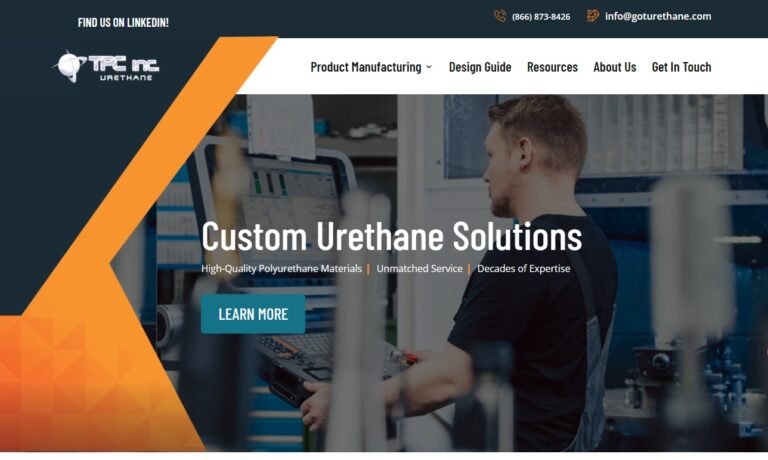
From concept, to production, to delivery, we have over 40 years experience with made-to-order cast urethane & cast polyurethane elastomer products. Weaver Industries offers urethane wheels, polyurethane molding, molded urethane, urethane sheets, & urethane/polyurethane manufacturing. Skilled at custom casting, discover the advantages of our urethane sheet and Action Mallet heads.
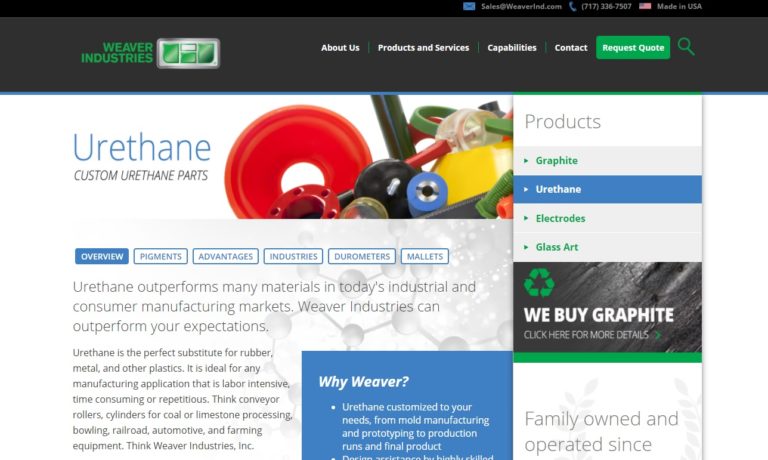
FallLine has been a manufacturer of custom polyurethane molding products for various industries since 1981. We offer a wide range of proven materials ranging from 40A - 80D, as well as the capability to formulate materials to meet specific needs.
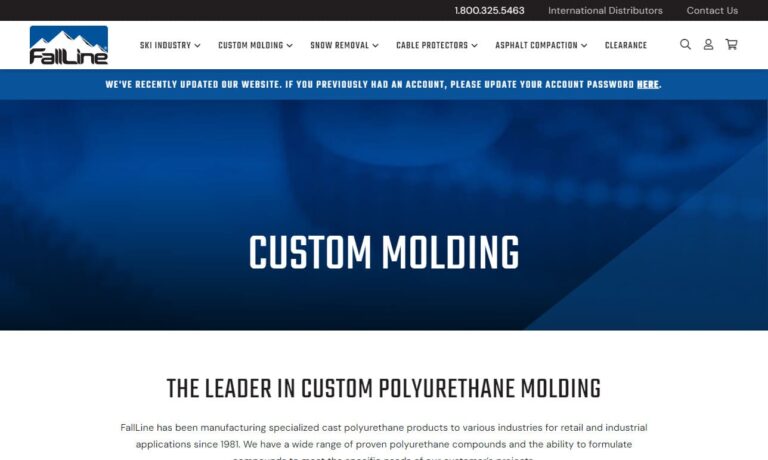
Since 1979, Uniflex has been a leading manufacturer of urethane products. We provide high-quality urethane rollers and urethane castings, as well as urethane molded products available in an array of colors. Uniflex offers customized body blocks and engine components for the automotive industry. Our team is dedicated to advancing our company and raising industry standards.
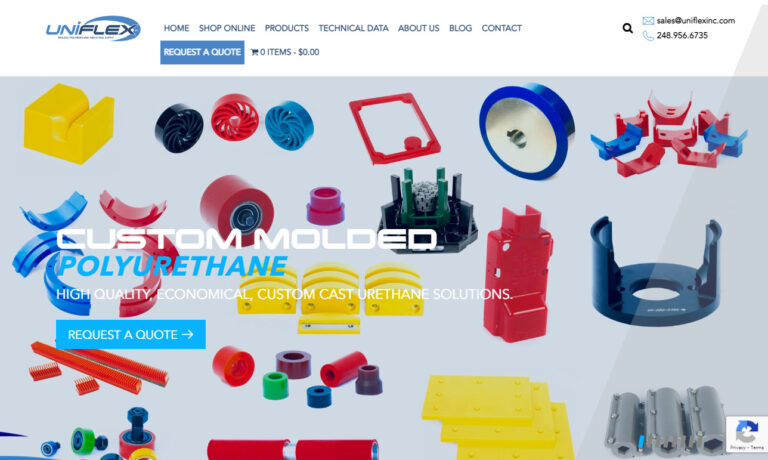
More Polyurethane Molding Companies
Polyurethane moldings are renowned for their exceptional performance, which has cemented their popularity. They boast a longevity that surpasses plastic and exhibit superior resistance to impact, abrasion, radiation, cold flow, and low temperatures compared to rubber. These moldings possess elastic memory, effectively dampen noise, and withstand heat and chemicals. Combining the best attributes of metal, rubber, and plastic, polyurethane forms robust adhesive bonds with most plastics and metals. Additionally, polyurethane outperforms most rubber materials in resistance to petrochemicals. In casting applications, polyurethane excels, particularly with low-pressure tooling and thick section molding.
Products Produced from Molded Urethane
Manufacturers employ this process to create a diverse range of items, including moldings, components, bowling balls, urethane bumpers, polyurethane belts, conveyor bushings, electrical potting compounds, press tool blocks, and pneumatic seals. It is particularly prized for its application in “memory foam” products. To explore molded polyurethane products in greater detail, we can categorize them by industry.
Automotive Products
Examples of molded urethane automotive products include automobile seats and seat belts. Though often covered with other materials, the substantial, cushiony seat is crafted from injection molded urethane. Additionally, polyurethane is ideal for applications like truck tires, thanks to its impressive ability to withstand compression loads.
Recreational Products
Examples of recreational products created through urethane molding include surfboards, skateboard tires, inflatable boats, and high-end tennis racquet grips. Surfboards boast solid molded urethane cores, offering a blend of lightness and durability. Molded urethane tires enhance skateboarders’ ability to execute intricate tricks. Inflatable boats incorporate components made from urethane sheets, ensuring robust construction. Tennis racquet grips crafted from molded urethane are highly stretchable, providing a snug, glove-like fit for superior control.
Machine Products
Molded polyurethane machine parts encompass conveyor wheels and urethane bushings, offering notable advantages in performance and durability. While molded urethane conveyor wheels come at a higher cost compared to rubber wheels, they boast superior resistance to abrasion and enhanced longevity. Urethane bushings are rapidly overtaking their rubber counterparts due to their resilience in harsh conditions where rubber falters, such as salty, chemical-laden, high-abrasion, and oil-saturated environments. Furthermore, urethane bushings excel in maintaining precise wheel alignment, making them a superior choice for demanding applications.
Electronic Products
Molded urethane serves as an exceptional protective outer layer for various electronic components. This material safeguards them against abrasion, mechanical stress, environmental hazards, and impacts. These urethane shields remain effective at temperatures up to 250℉.
History of Molded Urethane
Polyurethanes (PU) were pioneered in 1937 by Dr. Otto Bayer and his team. Recognizing the superior qualities of polyurethanes compared to existing plastics, Bayer and his colleagues initially concentrated on manufacturing PU fibers and flexible foams. The adoption of polyurethanes rapidly expanded, with their first major use being aircraft coatings during World War II. Additionally, they found applications in various coatings and durable clothing during the war.
In 1954, the industrial landscape witnessed the birth of mass-produced polyurethane foam, gum rubber, and elastomers, thanks to the introduction of toluene diisocyanate (TDI) and polyester polyols. By the closing years of the 1950s, manufacturers had mastered the art of creating flexible cushioning foams, revolutionizing comfort and versatility in various applications.
In the 1960s, automotive engineers began revolutionizing car interiors by incorporating molded urethane, a material we now recognize as essential in vehicle design. Initially, this innovation focused on safety, producing components like instrument and door panels through a method of backfilling thermoplastic skins with semi-rigid urethane foam. A pivotal moment came in 1969 when Bayer unveiled an all-plastic car in Düsseldorf, Germany, showcasing body panels made using a groundbreaking technique known as reaction injection molding (RIM). This method allowed for the mixing of urethane and reactants, which were then injected into molds to shape various components. Building on this innovation, reinforced reaction injection molding (RRIM) emerged. By adding fillers such as mica, processed mineral fibers, and milled glass, this advanced process produced reinforced products with enhanced stiffness, improved thermal stability, and reduced thermal expansion. In 1983, leveraging the capabilities of RRIM, automotive manufacturers achieved a milestone: the creation of the first American plastic-body car, the Pontiac Fiero.
In that same decade, automotive engineers revolutionized the industry by swapping out PVC plastisol for water-blown microcellular flexible PU foams, which they used to mold panel gaskets and air seal filters. They also innovated with a new RIM (resin injection molding) process, known as structural RIM. This advanced technique involved embedding glass mats into the RIM mold cavity, enabling manufacturers to produce significantly stiffer products.
Nowadays, molded urethane manufacturers craft products tailored for a multitude of applications across various industries. With the development of new urethane varieties, these products now endure a wider range of temperatures and environments.
Molded Urethane Materials Process
Polyurethane
The term “molded urethane” actually refers to polyurethane, a versatile polymer composed of organic units connected by urethane (carbamate) links. This material comes in various forms, but most polyurethanes exhibit a balance of flexibility and rigidity.
Raw Polyurethane
In the realm of castable urethane, raw polyurethane materials are found in a liquid state. This fluid nature allows the raw material to be effortlessly measured, mixed, and readied for molding.
Sulfur
Sulfur acts as a gradual vulcanizing agent and is frequently paired with other substances to enhance the stability of the final product.
Molded Urethane Process Details
1. Mold Formation
Before commencing the primary polyurethane molding process, manufacturers craft a silicone rubber mold—often mistakenly referred to as “silicon rubber”—alongside a master pattern.
2. Pre-Polymer Formation
After crafting the mold, manufacturers blend the raw polyurethane ingredients, sparking a reaction that transforms them into a pre-polymer solution.
3. Polymeric Transition
In the urethane molding process, the polymer’s transformation is finalized when the curative blends with the pre-polymer solution.
4. Pouring
The mixture, driven by pressure or heat, swiftly flows into the mold cavity. At this point, colors and other additives can be introduced to enhance its appearance.
5. Curing
Finally, the blend cools, solidifies, and undergoes a curing process to become the finished polymer product.
Molded Urethane Design
When crafting a molded urethane part, manufacturers consider various application specifications. These include the shape and thickness of the product, the necessary characteristics such as abrasion and corrosion resistance, as well as the product’s size, volume, and adherence to standard requirements.
To craft a bespoke urethane molding tailored to your needs, they employ several techniques. Firstly, they can design a custom mold, ensuring your part emerges precisely as you envision in both shape and size. Secondly, they can modify the material. For instance, if your product is foam-based, they can adjust it to be rigid, semi-rigid, or flexible. They can also introduce additives to alter its color. Lastly, they can perform various secondary operations to add unique features, such as special coatings or labeling. For detailed information on custom product design, discuss your specifications with your potential manufacturer.
Molded Urethane Variations and Similar Processes
The two primary types of urethane molding are open urethane casting and closed urethane casting. Additionally, there are other methods such as polyurethane foam molding, room temperature vulcanization (RTV), and reaction injection molding (RIM).
Open Urethane Casting
In the open polyurethane molding process, the pre-polymer and curative are heated and blended together. This concoction is then poured into an open mold cavity, where it sets and hardens into cast urethane. Notably, this curing process occurs without the application of any pressure.
Closed Urethane Casting
Closed polyurethane molding processes, such as injection molding, involve a meticulous dance of heat and pressure. The curative and pre-polymer are first heated and blended, then carefully injected through narrow channels into a sealed mold cavity. Within this confined space, aided by the controlled heat and pressure, the cast urethane undergoes a transformation, curing into its final form.
Polyurethane Foam Molding
Polyurethane foam molding is a widely utilized technique in manufacturing for creating soundproof insulation. The resulting product boasts an impressive coefficient of friction and exceptional qualities in flexibility, compression, and tension. Additionally, urethane foam products exhibit high stability, allowing them to retain their hardness throughout their entire operational lifespan.
Room Temperature Vulcanization (RTV)
The polyurethane molding process is a specialized branch of RTV (Room Temperature Vulcanization). RTV typically utilizes materials like polyurethanes, silicone, or wax. This process offers several advantages, such as achieving a superb surface finish and a high degree of detail. Polyurethane is favored for this method due to its hardness and its capability to endure temperatures up to 220°F (about 104°C). In the swift realm of manufacturing and prototyping, RTV’s chemical process involves adding curatives like sulfur to transform materials such as polyurethane into a more robust and durable compound.
The RTV process is perfect for projects where the manufacturer needs a limited number of parts that closely match the physical appearance or functional capabilities of previously produced parts or materials.
Reaction Injection Molding (RIM)
In the RIM process, manufacturers blend liquid polyisocyanate with various liquid additives, such as blowing agents, surfactants, catalysts, and polyols, before injecting the mixture into molds. Inside the mold, the urethane mixture undergoes high pressure from an impinging mixer, allowing it to cure. This method boasts benefits like reduced tooling costs and the production of strong, lightweight items. However, it comes with drawbacks, including pricier raw materials and longer production cycle times per item.
Injection Molding
Urethane injection molding closely resembles traditional plastic injection molding, with one key distinction: it employs thermoplastic polyurethane pellets instead of liquid material. These pellets are fed into a screw column, where they are subjected to high pressure and temperatures, transforming them into a liquid state. This molten material is then injected into a mold. This process allows for the production of high-tolerance parts in large volumes. However, the resulting products can occasionally suffer from defects like knit lines, and the tooling costs are notably high.
Compression Molding
Compression molding starts with heating a mold. Polyurethane is inserted into the mold, where pressure causes it to spread and take shape before curing. This method is ideal for creating large cross-sectional products and can often bypass the need for additional processing, though it can also be costly.
Benefits of Molded Urethane
Cost Effectiveness
Polyurethane molding provides cost-effective tooling solutions, comparable in expense to both polymer and rubber molding processes.
Quality
Moreover, the polyurethane molding process excels in shaping parts without requiring drafts or accommodating undercuts. It boasts exceptional precision and versatility across a broad spectrum of part dimensions.
Efficiency
Urethane molding boasts rapid turnaround times, while polyurethane molded parts typically demand minimal or no further finishing touches.
Material Superiority
Polyurethane elastomers boast a myriad of laboratory-tested advantages over counterparts fashioned from different materials. Exhibiting exceptional resilience, polyurethane stands impervious to radiation, ozone, oxygen, oxidation oil, tears, cuts, and abrasions. Moreover, it flaunts superior load-bearing capacity, a wider spectrum of hardness options, and easier coloration capabilities compared to rubber. Notably, urethane outperforms certain steel varieties in durability, showcasing remarkable resistance to wear and tear. Unlike metal, polyurethane offers greater resilience and noise reduction capabilities, coupled with remarkable flexibility and cost-effective manufacturability. It excels in resisting impacts, corrosion, and abrasion, while remaining lightweight, non-conductive, moldable with ease, and devoid of spark generation.
Mechanical Properties of Polyurethane
There are four components involved in producing a cast urethane: the diisocyanate compound, the polyol compound, the chain extender or curatives, and the additives. The outcoming mechanical properties will rely on the formulation of the prepolymer resin and the curatives. The prepolymer resin is a mixture of polyol and diisocyanate compounds. Next, additives are added to enhance the polyurethane properties, including color, part machinability, resin curing time, UV protection, and so forth. The proportions of the additives are carefully measured relative to the volume of the resin mixture so that it will not weaken the urethane cast.
During the casting process, polyurethane formation unfolds through a chemical reaction. Initially, a polyol molecule, possessing alcohol groups at each end of its carbon chain, reacts with a diisocyanate molecule, which features isocyanate groups at both termini. This reaction yields a molecule with a reactive alcohol group at one end and a reactive isocyanate group at the other. Subsequently, the alcohol end of one molecule binds with an isocyanate terminus of another, while the opposite ends of these chains continue reacting with chain extenders. This sequential process continues, leading to the creation of long-chain polyurethane polymers.
Urethane castings boast distinctive properties that set them apart in the industry. Here are some of the most coveted attributes of polyurethane resins.
Abrasion Resistance
Cast urethanes excel in applications for wheels and rollers due to their outstanding ability to resist abrasion.
Sliding abrasion involves the rubbing of soft and hard materials against each other, with or without contaminants between surfaces. Cast urethanes, known for their high tear strength and low coefficient of friction, exhibit excellent resistance to sliding abrasion.
Impingement abrasion occurs when particles strike a surface, leading to erosion. Certain types of cast urethanes, known for their exceptional resilience, are utilized in such applications. The resilience of polyurethanes ensures high yield strength, effectively distributing forces exerted by impacting particles across the surface.
The key to achieving abrasion resistance lies in the precise formulation of the urethane resin mixture. Among polyol compounds used in polyurethane production, polyesters stand out for their notably superior tear and abrasion resistance.
Impact Resistance
Cast urethanes, prized for their unique properties, find application in diverse shock-absorption roles. Urethane castings’ resilience and exceptional impact resistance enable them to absorb force by flexing elastically, promptly restoring their original shape. This capability not only dissipates energy effectively but also safeguards the structural integrity across the impacted surface.
Hardness
Polyurethane hardness measures its resistance to surface deformation in specific areas. Elastomers, evaluated by their Shore hardness number using a durometer, encompass twelve scales. Each scale employs unique indenters, profiles, and applied forces. Urethane casts typically use Shore A and D scales: Shore A for semi-rigid soft polyurethanes and Shore D for rigid or hard rubber polyurethanes. Notably, higher hardness doesn’t necessarily correlate with increased rigidity or strength.
Tensile Strength
Elastomer tensile strength represents the maximum force or stress a material can withstand before breaking. Urethane castings can be precisely engineered to meet strength specifications, achieving up to 14,000 psi by incorporating advanced composite materials like carbon fibers and fiberglass.
Flexural Strength
Flexural strength is a critical measure of the bending force needed to fracture flexible urethane casts. Urethanes exhibit remarkable flexural properties even in thin cross-sections, typically boasting a flexural strength of 17,000 psi. In composite casts, this strength can soar to impressive levels, reaching up to 39,000 psi.
Things to Consider Regarding Molded Urethane
If you’re on the lookout for molded urethane products, it’s crucial to partner with a trusted supplier who truly understands your specific application requirements. Begin your search by exploring the featured high-quality companies on this page. Nestled among informative sections, each company offers detailed profiles and contact information. As you browse, seek out manufacturers whose services and products align closely with your needs. Take note of their delivery options and available certifications, which can often be found online. Select three or four providers with whom you’d like to engage directly, then reach out either by phone or through a quote request. During your discussions, delve into your specifications, budget considerations, ideal timeline, and delivery preferences in detail. Ensure that any necessary certifications or safety standards are thoroughly addressed and met by each prospective manufacturer. After speaking with each candidate, carefully compare their responses. Choose the manufacturer that you believe can best fulfill your requirements, and move forward confidently with your project.
Check out our Injection Molded Plastics website
What makes polyurethane moldings superior to rubber or plastic?
Polyurethane moldings exhibit enhanced longevity, superior resistance to impact, abrasion, chemicals, and low temperatures compared to rubber and plastic. They combine the best attributes of metal, rubber, and plastic, including robust adhesive bonding, elasticity, heat resistance, and excellent noise dampening.
What are common products made from molded urethane?
Molded urethane is used to create automotive components, bowling balls, belts, conveyor bushings, bumpers, electrical potting compounds, press tool blocks, pneumatic seals, “memory foam,” surfboards, skateboard tires, inflatable boat parts, racquet grips, conveyor wheels, bushings, and protective layers for electronics.
What are the main types of molded urethane processes?
Key methods include open urethane casting, closed urethane casting (such as injection molding), polyurethane foam molding, room temperature vulcanization (RTV), reaction injection molding (RIM), and compression molding. Each method suits different part specifications and production volumes.
How does the hardness of polyurethane affect its applications?
Polyurethane hardness is measured using Shore A and D scales, indicating resistance to surface deformity. Hardness affects whether the material behaves as a soft, semi-rigid, or rigid elastomer, impacting suitability for roles like cushioning, impact absorption, or supporting heavy loads, but a higher hardness does not always mean greater strength.
What are the benefits of using molded urethane parts?
Molded urethane offers cost-effective tooling, precise and versatile part shaping, rapid turnaround, material resilience, excellent impact and abrasion resistance, corrosion protection, load-bearing strength, wide hardness options, easy coloration, and reduced noise along with lightweight, non-conductive properties.
What should you consider when selecting a molded urethane manufacturer?
Choose a manufacturer experienced with your application’s requirements. Check their product range, delivery options, certifications, and responsiveness to your specifications, budget, timeline, and standards. Compare multiple suppliers to ensure you select the best partner for your needs.
How are the mechanical properties of urethane controlled during production?
The mechanical properties depend on the formulation of the prepolymer resin (polyol and diisocyanate compounds), the chain extenders, and additives. Adjusting these elements allows engineers to tailor tensile, flexural strength, abrasion resistance, and other qualities for specific applications.


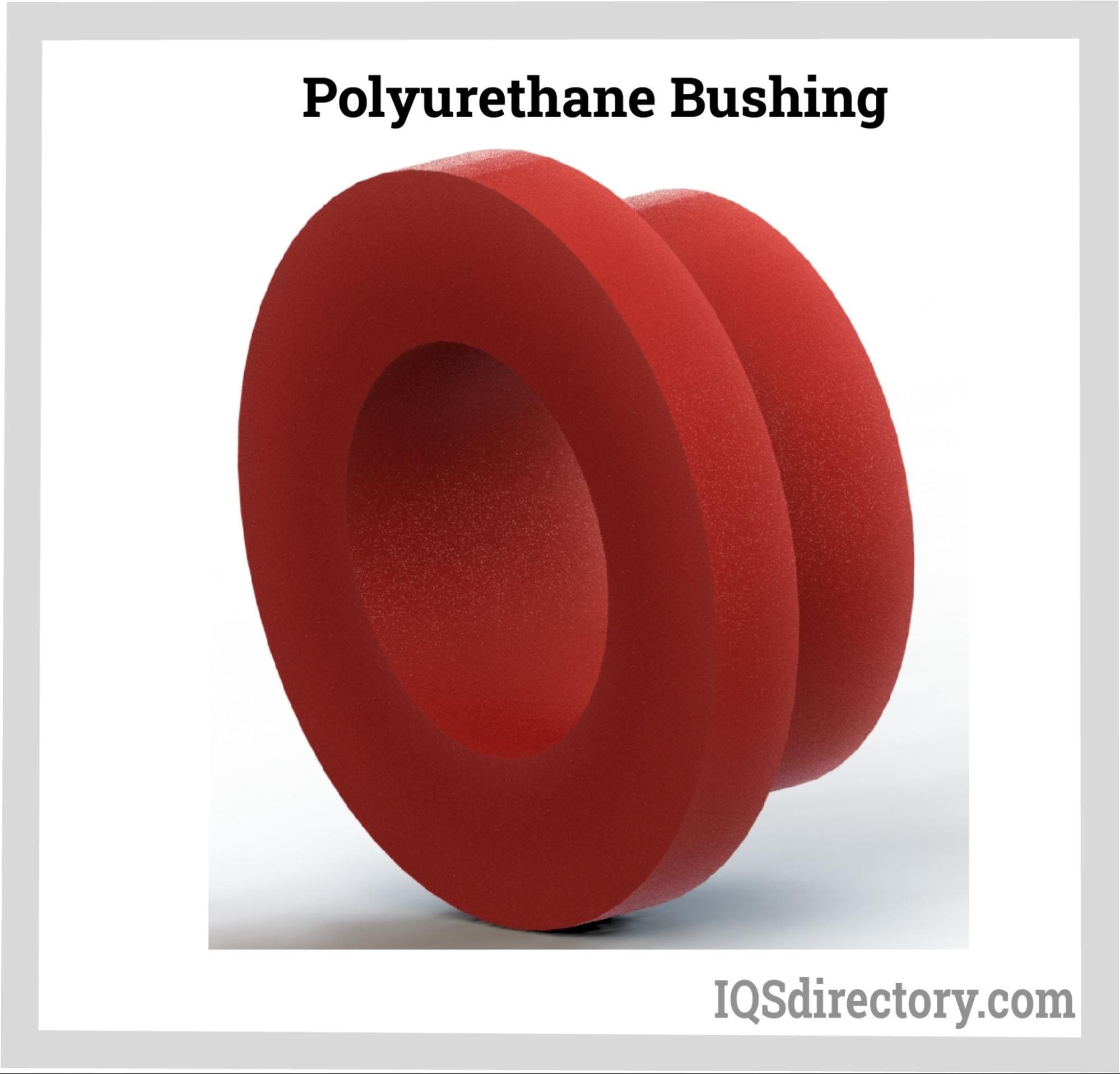
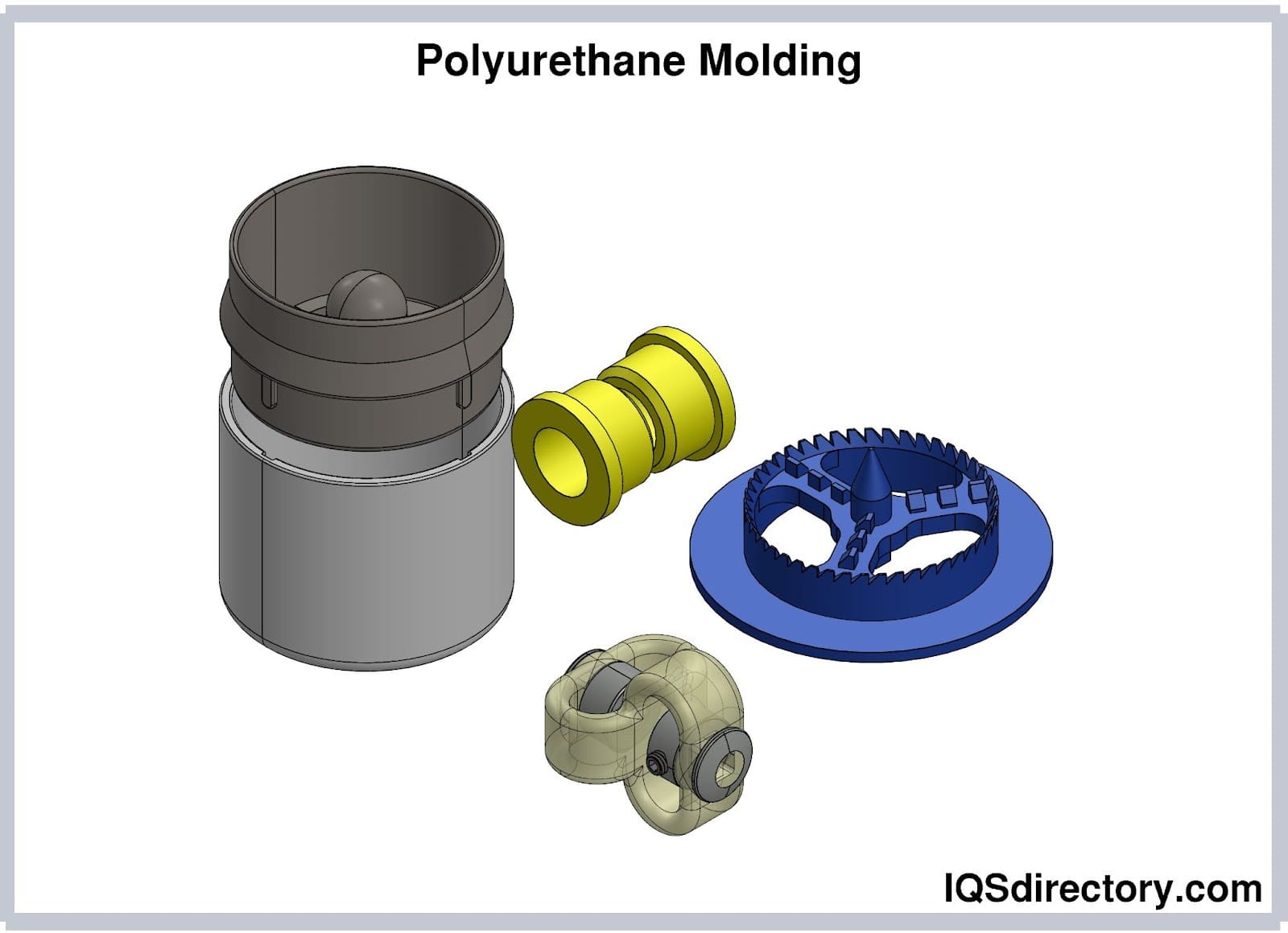
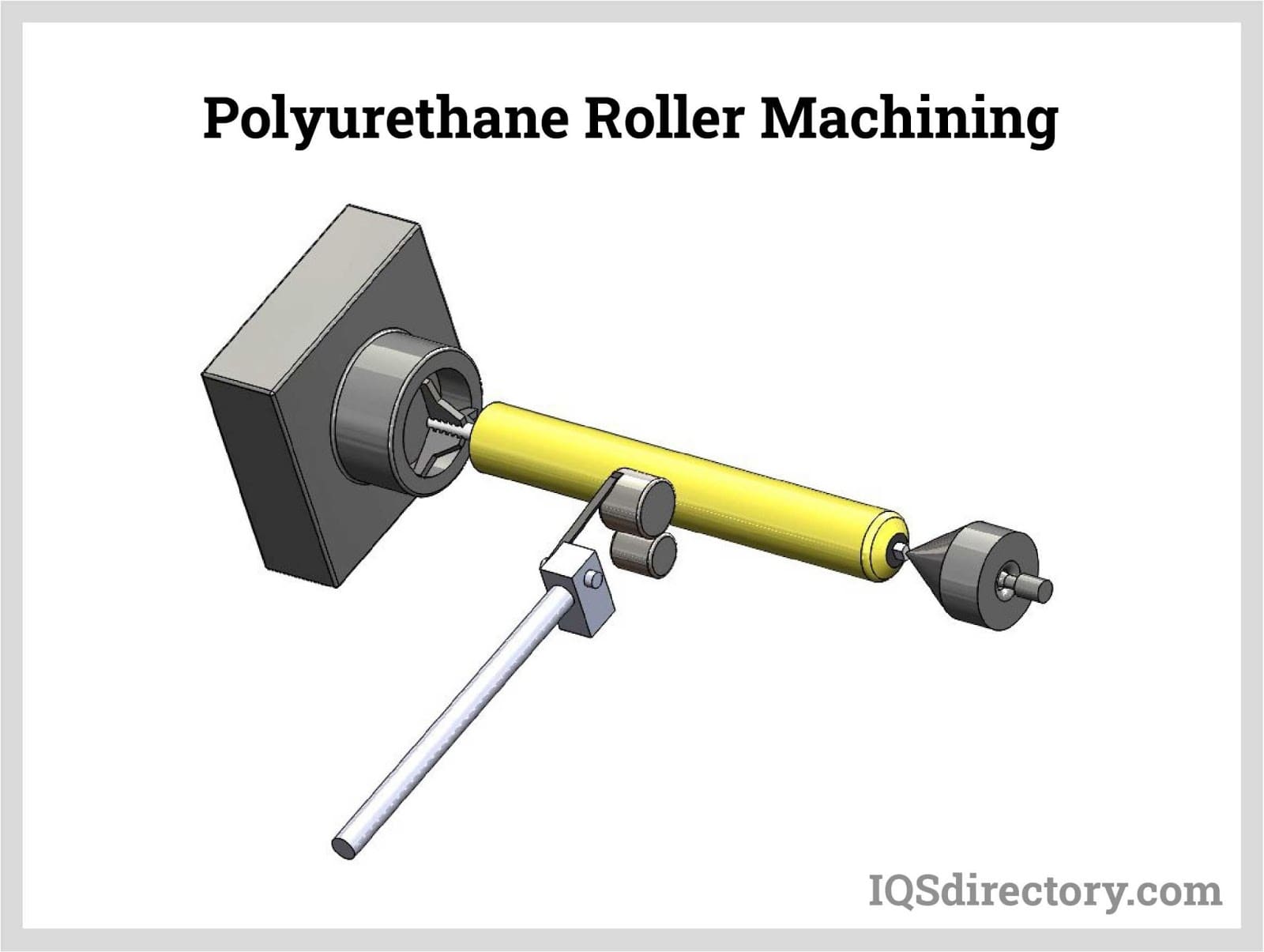
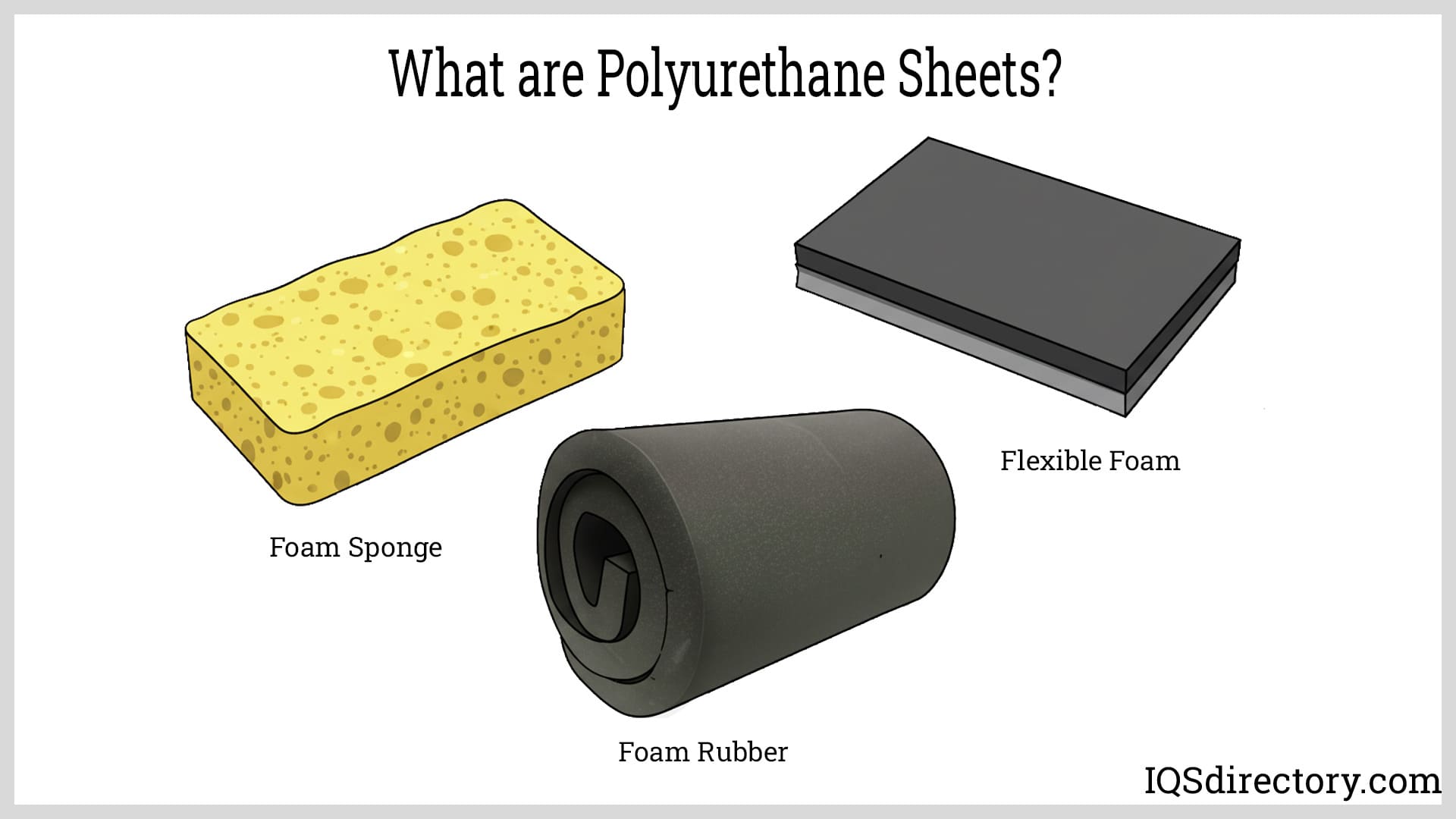
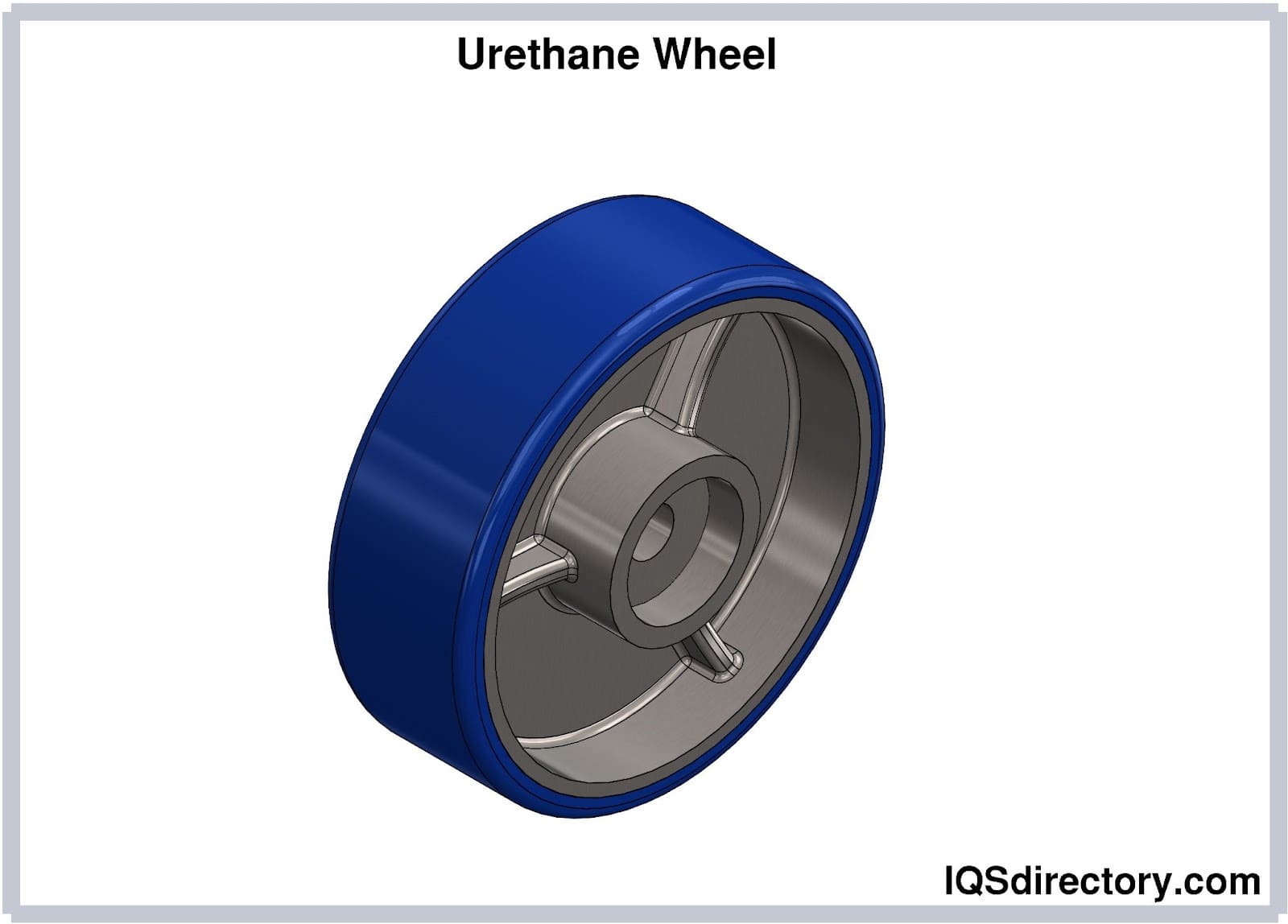
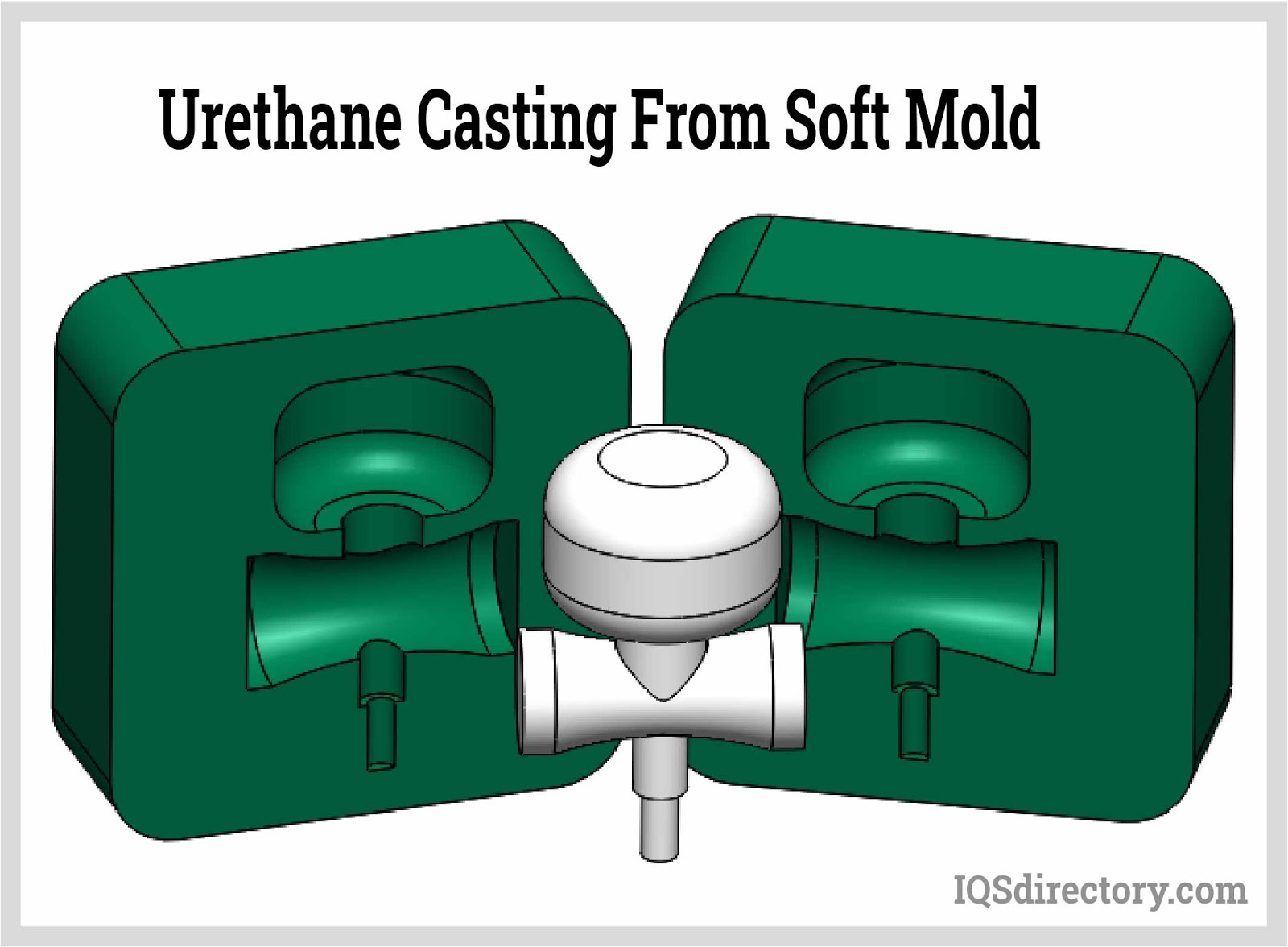
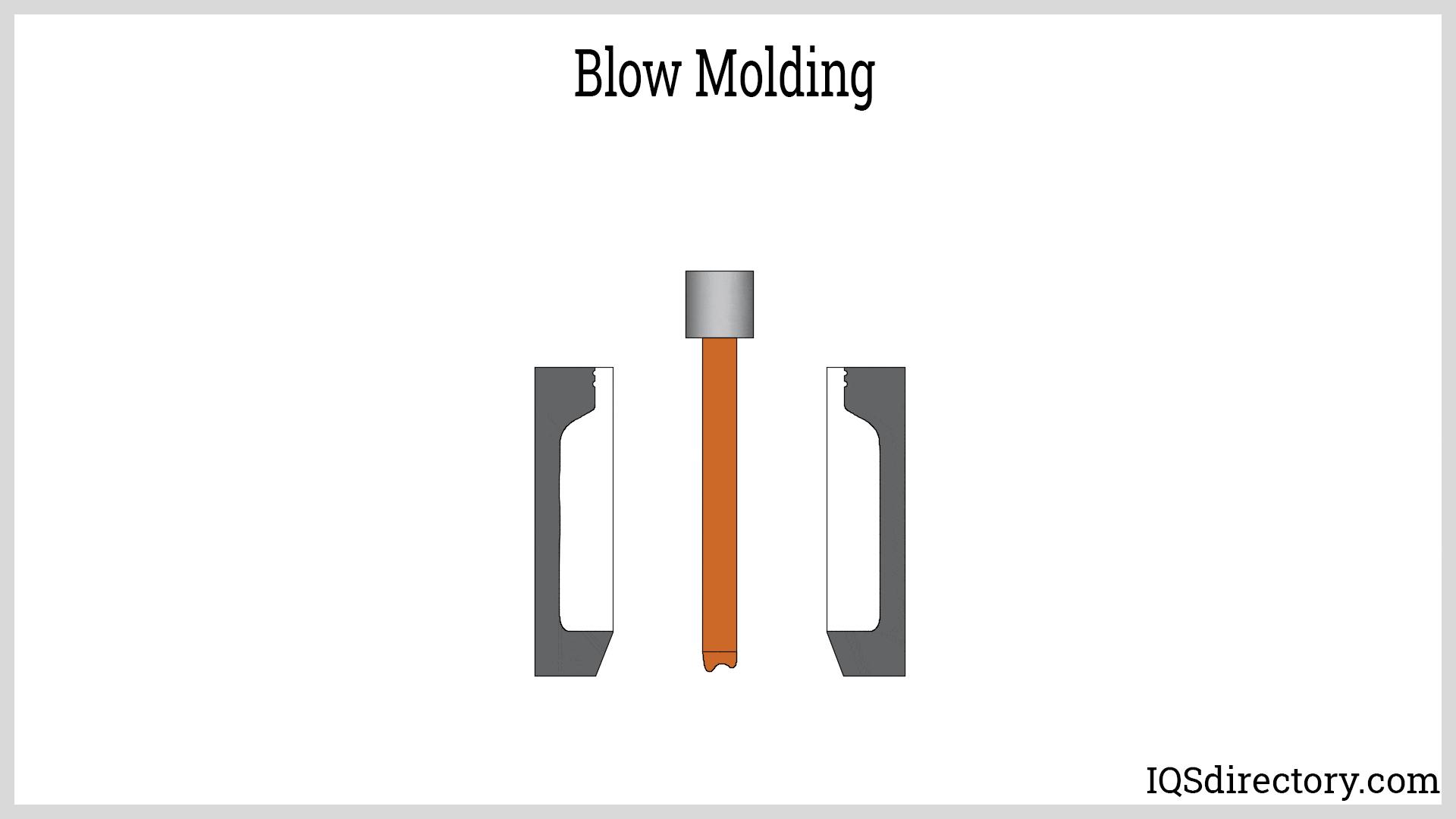
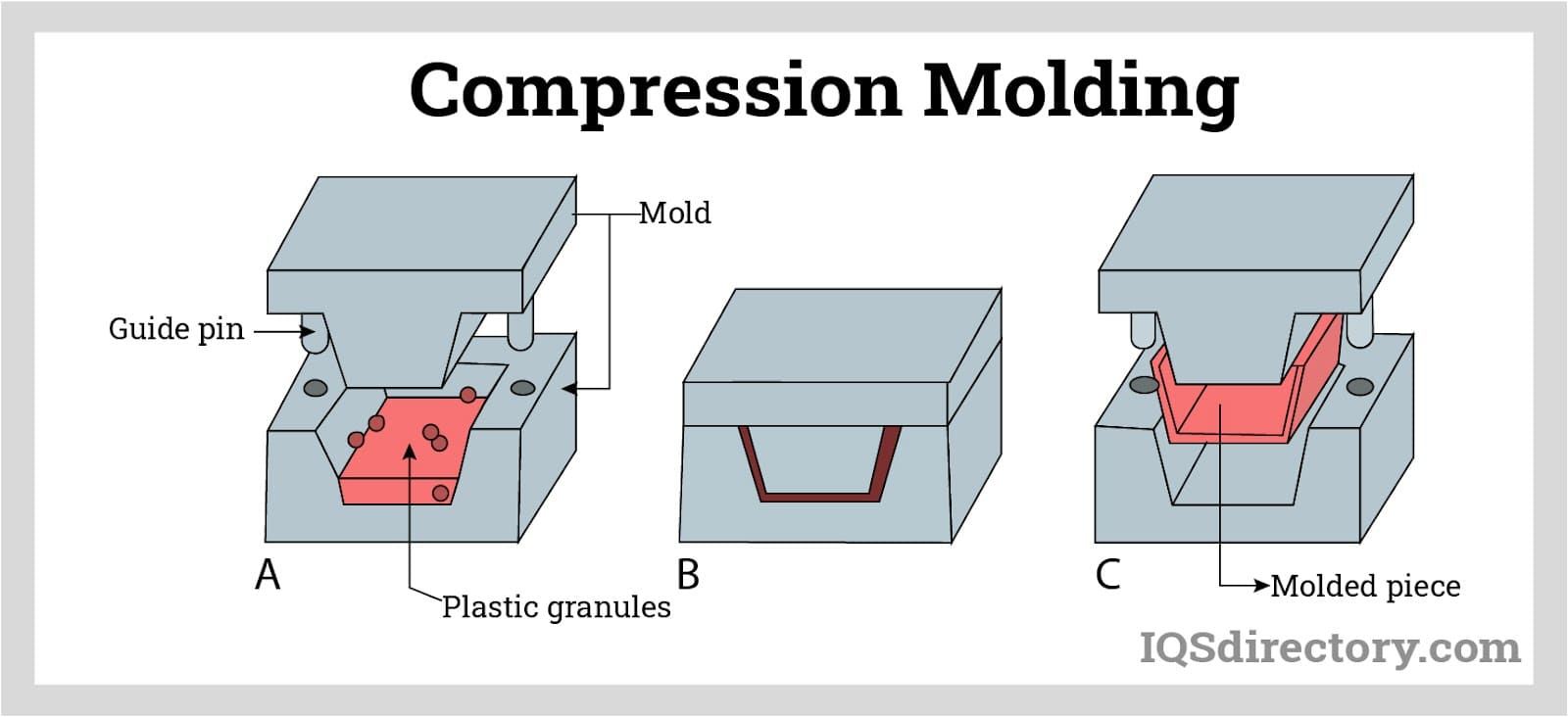
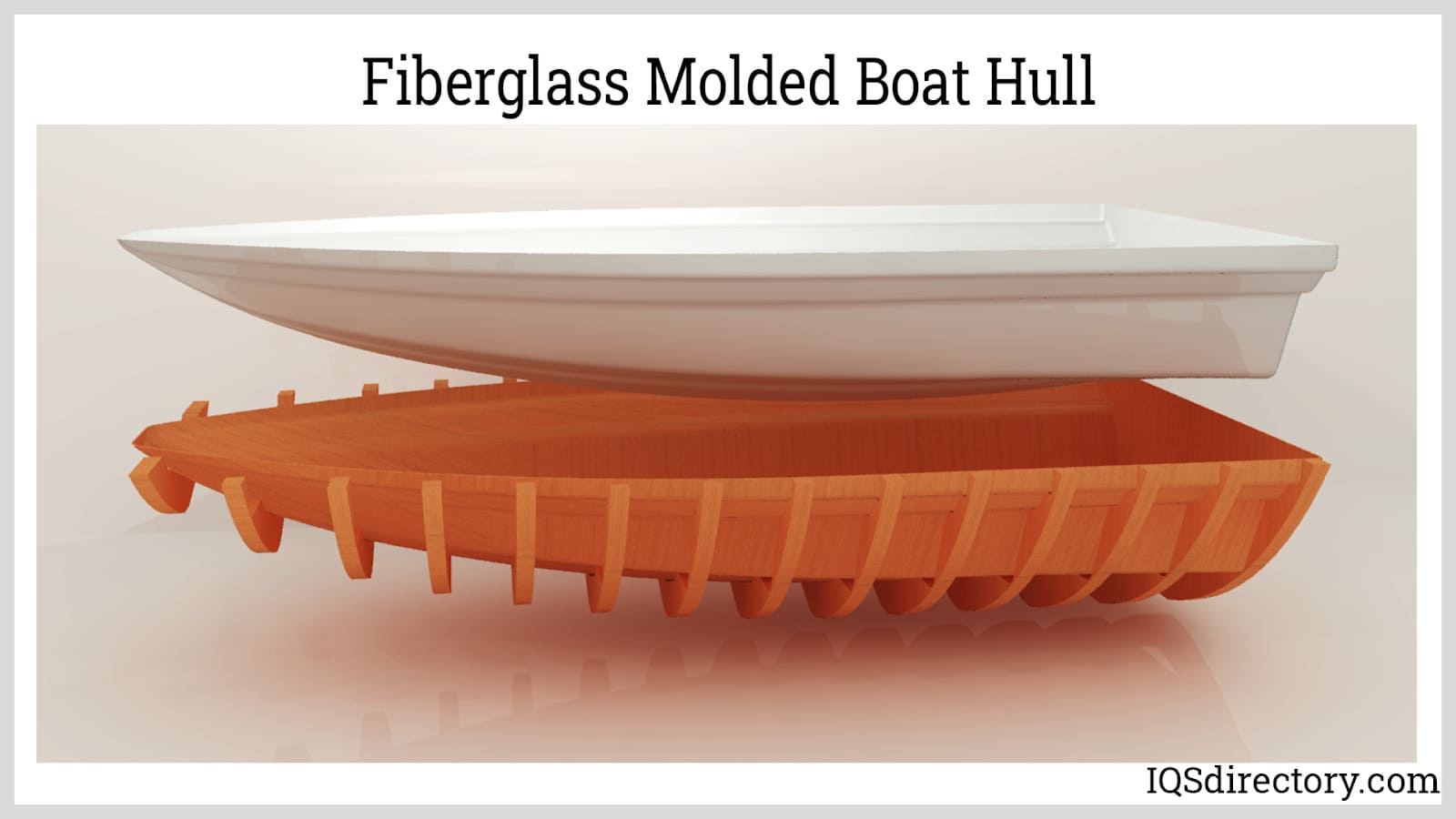
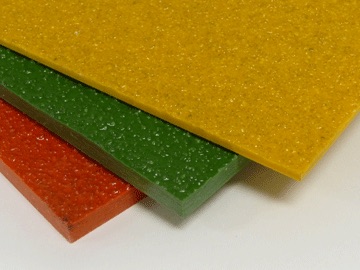 Fiberglass Fabricators
Fiberglass Fabricators Injection Molded Plastics
Injection Molded Plastics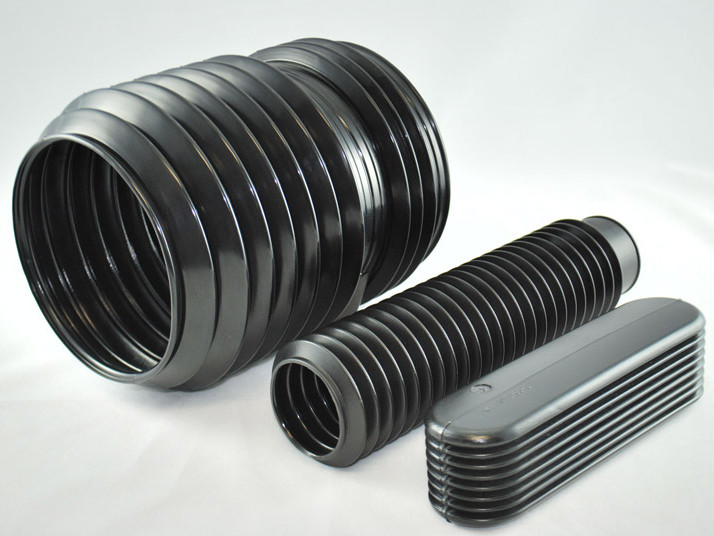 Plastic Blow Molding
Plastic Blow Molding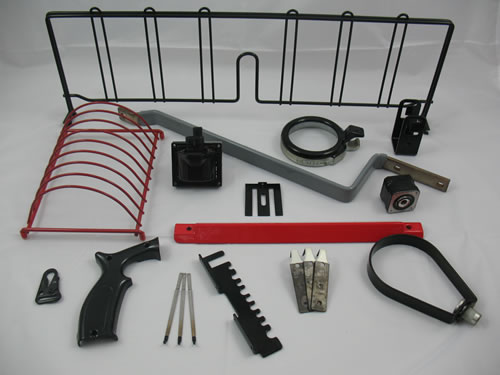 Plastic Dip Molding
Plastic Dip Molding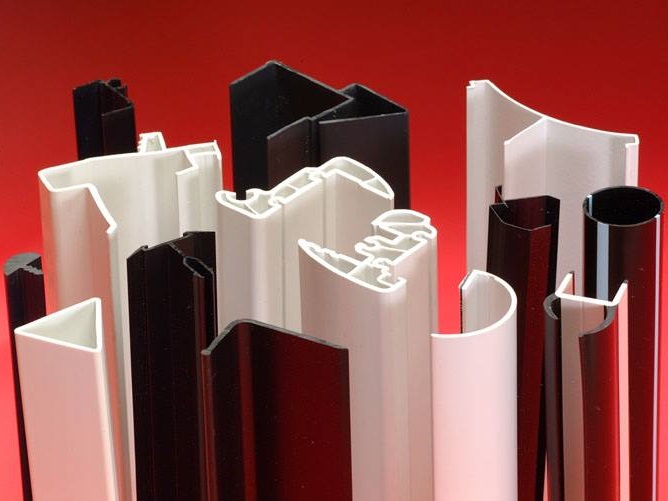 Plastic Extrusions
Plastic Extrusions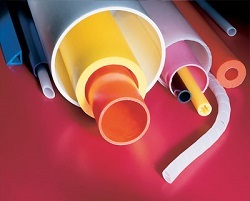 Plastic Tubing
Plastic Tubing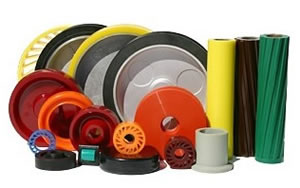 Polyurethane Molding
Polyurethane Molding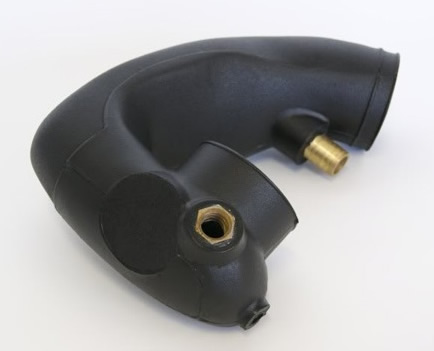 Rotational Molding
Rotational Molding Vacuum Forming
Vacuum Forming Castings & Forgings
Castings & Forgings Bulk Material Handling
Bulk Material Handling Electrical & Electronic Components
Electrical & Electronic Components Flow Instrumentation
Flow Instrumentation Hardware
Hardware Material Handling Equipment
Material Handling Equipment Metal Cutting Services
Metal Cutting Services Metal Forming Services
Metal Forming Services Metal Suppliers
Metal Suppliers Motion Control Products
Motion Control Products Plant & Facility Equipment
Plant & Facility Equipment Plant & Facility Supplies
Plant & Facility Supplies Plastic Molding Processes
Plastic Molding Processes Pumps & Valves
Pumps & Valves Recycling Equipment
Recycling Equipment Rubber Products & Services
Rubber Products & Services